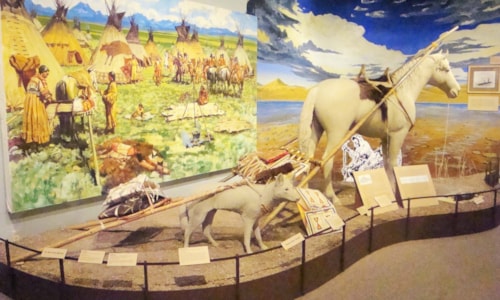Henry Plummer | An Infamous Character
Amongst Montanans, Henry Plummer is a household  name, known as one of the most infamous characters in our colorful history. Yet his story is one of the most contested accounts in the mining history of the West. That leaves us with the question: what is the truth about Henry Plummer (a man who seemed to be an efficient lawman yet was convicted of unspeakable crimes), and what aspects of his ‘accepted story’ are contestable.
name, known as one of the most infamous characters in our colorful history. Yet his story is one of the most contested accounts in the mining history of the West. That leaves us with the question: what is the truth about Henry Plummer (a man who seemed to be an efficient lawman yet was convicted of unspeakable crimes), and what aspects of his ‘accepted story’ are contestable.
Henry Plummer, the youngest of seven, was born in 1832 to William Jeremiah and Elizabeth Plummer in Addison, Maine. Henry grew up with a clearly defined life path; he was to follow in the footsteps of his father, older brother, and brother-in-law, to become a sea captain. Unfortunately, his father William passed away when he was a teenager, and hard financial times fell upon his family. Becoming privy to the massive gold rush taking place in California, Henry decided he would move west, promising to send back his riches to help the family.
In late April of 1852, he made his journey to California, through Panama City. In all, the journey took 24 days. Upon Henry’s arrival in San Francisco he took a job at a local business. He moved 150 miles to Nevada County, California, once he had saved enough money to leave the city for the mines. Documents show that shortly after his arrival in Nevada County he owned both a ranch and mine in the area. He then traded some of his mine shares in exchange for the Empire Bakery in Nevada County. The residents loved Plummer and persuaded him to run for Sheriff in 1856. Following the election (at the age of 24) he became marshal of the third largest settlement in California, increasing his prominence in the state.
It was shortly after re-election that Henry’s career of crime is said to have begun. Following re-election in 1857, Plummer killed the husband of a woman with whom he was said to have been having an affair. Henry was arrested and ultimately convicted of second degree murder, being sentenced to ten years in prison. The residents were skeptical of Plummer’s guilt, and petitioned for a pardon claiming that he had acted in self-defense. He was released on August 16, 1859 (after six months of incarceration). The reason cited for release was that he was dying of consumption rather than the controversial notion that he was unjustly incarcerated.
Following his stint in prison, Plummer fell in with the wrong crowd, spending his money in the brothels and joining a group of bandits. He was again arrested, this time for stage coach robbery, but was acquitted as there was not enough evidence to prove guilt. Not long after that, he was arrested for the murder of William Riley, this time escaping prison by bribing the jailor. Along the way to Oregon, he met Jim Mayfield, a wanted man for the murder of a sheriff in a neighboring town. Plummer, himself a wanted man, is said to have sent a letter to the California newspapers claiming that both he and Mayfield had been hanged in Washington, thus taking the bounty off their heads. He and Mayfield split ways, and Plummer landed in Idaho where he was reunited with cellmate Cyrus Skinner and others like Clubfoot George Lane and Bill Bunton. These men are said to have started a gang, killing a saloon keeper in Orohno, Idaho.
While his counterparts were focused on their lawless ways, Plummer found his tuberculosis to be taking over. Plummer decided to head back East to be with his family. This decision led him to Fort Benton where he planned to take a steam boat. Unfortunately, by the time he had arrived the river was frozen over for the year and no boats were traveling. He planned to winter in the area and found work at the Sun River Farm where he met Electa Bryan. After only two months of courting, he asked for her hand in marriage which she accepted. Rather than heading East, he chose to return to the mines and made his way to Bannack, and settled along Grasshopper Creek. It was here that his chapter in Montana history truly began.
**Stay Tuned. Part 2, 3, and 4 to depict Henry’s time in Southwest MT and Part 5 on the discrepancies in his story











